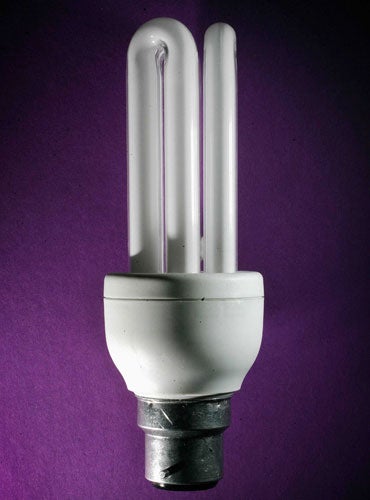Eco-bulbs grow dimmer over their lifetime

Energy-saving light bulbs lose a fifth of their brightness over their lifetime, according to reports.
The bulbs, known as compact fluorescent bulbs (CFLs), use up to 80 per cent less electricity than traditional incandescent bulbs which are being phased out of shops.
But a study carried out by a German consumer group found CFLs lose much of their brightness over their lifetime and can end up emitting just 60 per cent as much light as their nearest equivalent traditional bulb.
Researchers tested 18 CFLs over 10,000 hours and found an average reduction in brightness of 22 per cent. Three of the bulbs stopped working altogether.
Traditional bulbs lose no more than 7 per cent of their brightness by the time they stop working - which is around 2,000 hours after first being used.
Dickon Ross, editor of Engineering and Technology Magazine which published the research, said consumers were being misled.
He told the Daily Telegraph: "There is a big difference between what most bulbs' packaging promises and what the reality is. It's no wonder so many consumers are dissatisfied with the bulbs."
Earlier this year countries across the EU started the mandatory phase-out of 100W and frosted incandescent lightbulbs in favour of energy-efficient CFLs following a voluntary phase which started in 2007.
Supporters of the new bulbs say they can cut a home's annual energy bill by up to £37 and save 135kg of CO2 each year.
But others say the energy-saving lightbulbs can trigger migraines, exacerbate skin conditions and lead to other health problems.
David Price, of Spectrum, an alliance of charities working with people with light-sensitive health conditions, said public concerns were being ignored in the move to energy efficiency.
Join our commenting forum
Join thought-provoking conversations, follow other Independent readers and see their replies
Comments
Bookmark popover
Removed from bookmarks